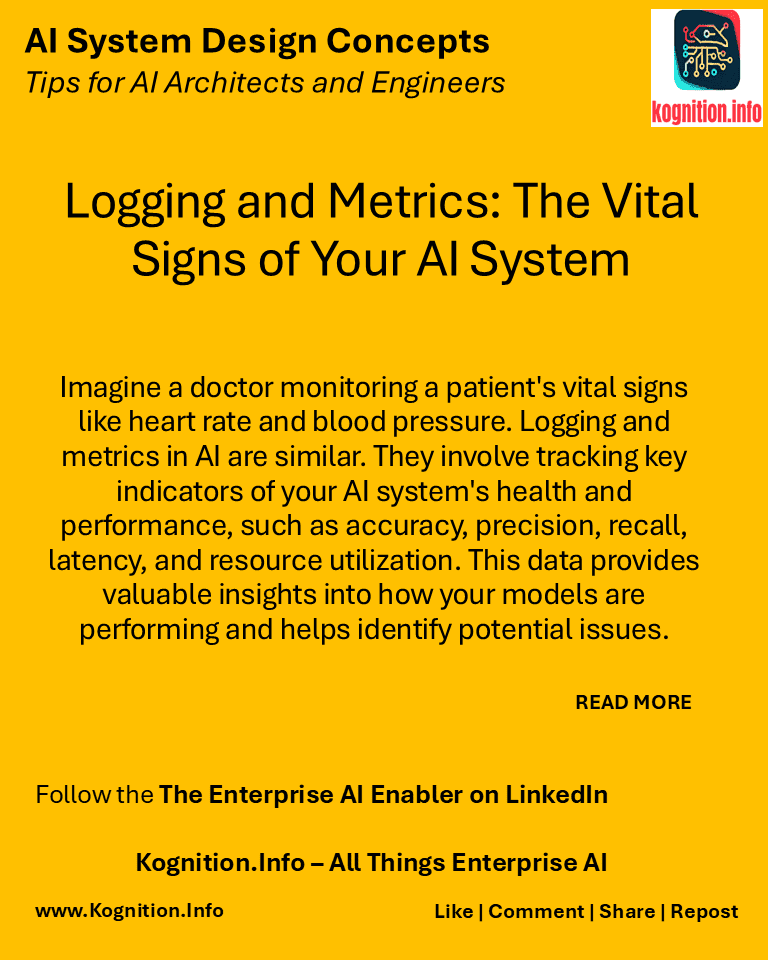
Imagine a doctor monitoring a patient’s vital signs like heart rate and blood pressure. Logging and metrics in AI are similar. They involve tracking key indicators of your AI system’s health and performance, such as accuracy, precision, recall, latency, and resource utilization. This data provides valuable insights into how your models are performing and helps identify potential issues.
Use cases:
- Tracking model accuracy: Monitoring the accuracy of predictions over time to detect degradation or bias.
- Measuring latency: Tracking the time it takes for the model to make predictions and identify performance bottlenecks.
- Monitoring resource utilization: Observing CPU, memory, and GPU usage to optimize resource allocation and identify potential scaling needs.
How?
- Choose logging and monitoring tools: Select tools like Prometheus, Grafana, or cloud-based solutions like AWS CloudWatch.
- Instrument your code: Add code to log relevant metrics and events within your AI application.
- Visualize data: Use dashboards and visualizations to monitor metrics and identify trends.
- Set up alerts: Configure alerts to notify you of significant changes or anomalies.
Benefits:
- Early problem detection: Identify potential issues before they impact users.
- Performance optimization: Pinpoint performance bottlenecks and optimize resource utilization.
- Data-driven insights: Gain insights into model behavior and identify areas for improvement.
Potential pitfalls:
- Overwhelming data: Collecting too much data can make it difficult to identify meaningful insights.
- Alert fatigue: Too many alerts can lead to alert fatigue and important issues being missed.
- Storage costs: Storing large volumes of log data can be expensive.
